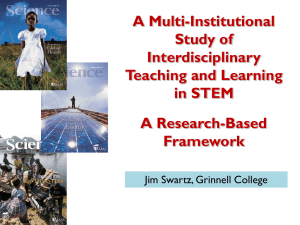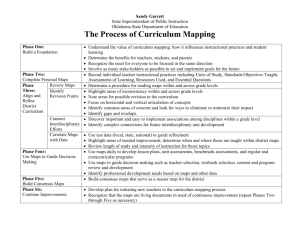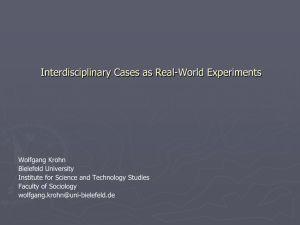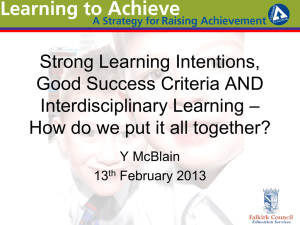File
advertisement
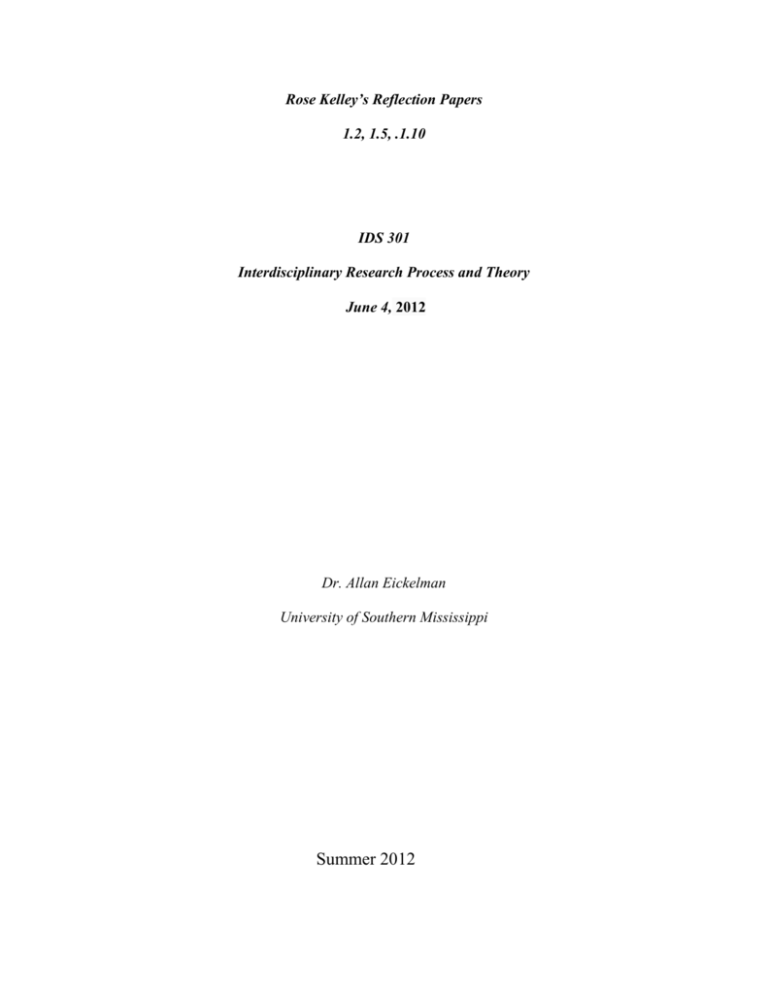
Rose Kelley’s Reflection Papers 1.2, 1.5, .1.10 IDS 301 Interdisciplinary Research Process and Theory June 4, 2012 Dr. Allan Eickelman University of Southern Mississippi Summer 2012 1.2 IDS Dr. Allan Eickelmann Claimed and Not Claimed 1.2 This chapter compared and contrasted the field of interdisciplinary studies are most unlike the characteristics of the disciplines? Why is the field of interdisciplinary studies unlikely to become a discipline? There are key differences between the disciplines and interdisciplinary studies. An interdisciplinary study has a research process of its own to produce knowledge but freely borrows from the disciplines when appropriate. Disciplines like Interdisciplinary studies both seek to accomplish this via the process of integration. Established Disciplines claim a body of knowledge about a certain subject or objects, while in contrast to Interdisciplinary studies that claims a burgeoning professional literature of increasing sophistication, depth of analysis, breadth of coverage, and thus , utility. This literature includes subspecialties on interdisciplinary theory, program administrating, curriculum design, research process, and assessment. Each discipline has its own defining elements that distinguish it from other disciplines. Phenomena, assumptions, epistemology, concepts, theories, and methods are some of the ways in which traditional disciplinary studies are most unlike the characteristics of the disciplinary studies. This chapter compared and contrasted the field of interdisciplinary studies with that of traditional disciplinary studies by explaining the meaning of interdisciplinary studies continues to be contested by its practitioners and critics are concerned with the two conceptions of interdisciplinary studies. The primary is that of integration which is the process by which ideas, data, information, methods, tools, concepts, and or theories from two or more disciplines are synthesized, connected or blended. Metaphors 1.5 Metaphors help us visualize complex ideas or concepts. The metaphor of the bowl of fruit and the smoothie helps us to visualize two complex concepts, multidisciplinary, that are mistakenly used interchangeably. Can you think of another method for each of these terms? There are two metaphors that come to mind that helps us to visualize the complex ideas or concepts. The metaphor of the bowl of fruit and the smoothie helps us to visualize two complex concepts such as multidisciplinarity. Such as in a bowl of vegetables containing a variety of vegetables with each vegetable representing a discipline and being in close proximity to the other is a great metaphor. The numbers of vegetables used and the proportion of each in the bowl may not be based on anything more than for visual appeal. In the case of the V8 juice, this is not so, interdisciplinary studies, however compares to a vegetable blend juice in finely blended to distinctively have the flavor and nutrients of each vegetable in the V8 juice. These two metaphors are effectively illustrating the differences between multidisciplinary studies and interdisciplinary studies as an example of the vegetable salad and the V8 juice. 1.10 Reflection How has this chapter broadened and /or clarified your understanding of interdisciplinary studies as an academic field? This chapter has broadened my prospective and knowledge base and has clarified the reader’s understanding of interdisciplinary as an academic field. Interdisciplinary studies is a process of answering a question, solving a problem, or addressing a topic that is too broad or complex to be dealt with adequately by a single discipline, and draws on the disciplines with the goal of integrating their insights to construct a more comprehensive understanding. Interdisciplinary means being more inclusive of what disciplinary theories, concepts, and methods of inquiry. Using different disciplinary tools, and carefully estimating the degree of usefulness of one tool versus another tool to shed the light on the problem. The integrated definitions of interdisciplinary studies set out earlier assume “the existence and relative resilience of disciplinary as modes of thought and institutional practices” (Moran, 2010, p.15) The clarity and quality of interdisciplinary assessment has been improving since research of cognition and instruction has identified learning outcomes that are distinctive to interdisciplinary learning. I enjoyed and learned new terms that explained the differences between disciplines and interdisciplinary and transdisciplinarity. Lastly this chapter has identified strengths and weakness of various metaphors descriptive of interdisciplinary studies. References Repko, Allen, F. (2012) Interdisciplinary Research Process and Theory (2nd edition), pp .3-31. Sage Publication, Thousand Oaks, CA




